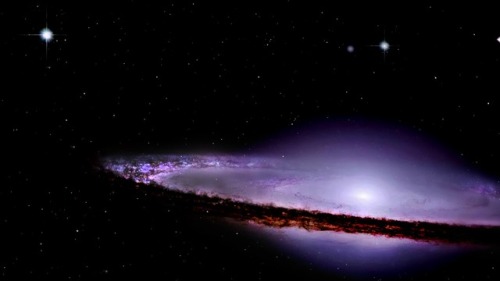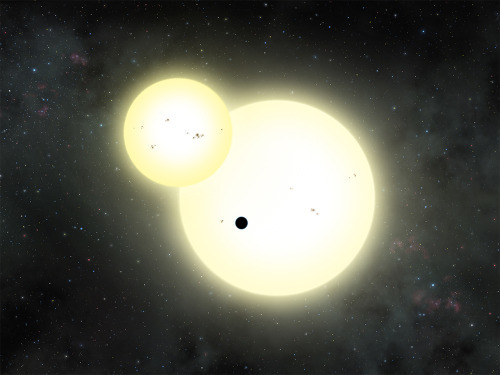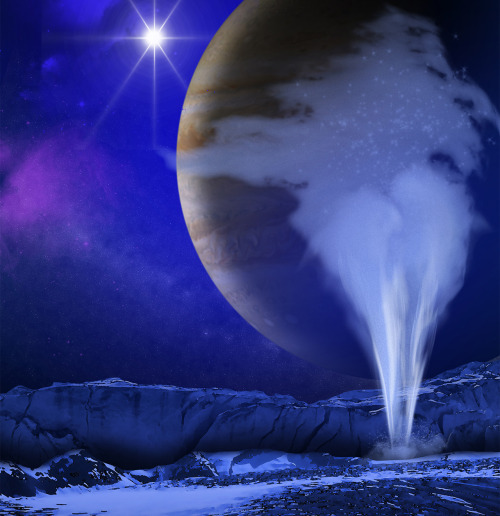
187 posts
Latest Posts by fionaahutton - Page 4

John's name is going to Mars
😅
Nice 😉👍

Glendale Teaser Tomorrow!
Engineering at its finest.
Close encounters of the third kind.

Milky Way over Devils Tower
js


The Sombrero Galaxy
js
This is why foreigners find English so hard to learn properly.
Adjectives postpositive
If you heard your friend say, “Last night I ate a dinner delicious,” you would probably find that sentence a little odd. That’s because the adjective delicious is placed postpositively, meaning after the noun that it modifies. In English, the general rule is for adjectives to be prepositive, or placed before the nouns they modify. We say, “I had a good time,” and not “I had a time good.” But as is often the case in English grammar, there are plenty of exceptions to the rule.
One notable area of exception is in terms borrowed from Romance languages, where postpositive adjectives are common. We say professor emeritus, musician extraordinaire, steak flambé, chicken cacciatore, and pasta puttanesca.
Certain phrases in English that have become accepted as a unit feature postpositive adjectives, such as solicitor general and notary public. Compound nouns such as these typically pluralize by adding the plural ending to the base noun, not the adjective. That’s how we get solicitors general and notaries public.
English pronouns also tend to take adjectives postpositively. The box contained nothing useful. They wanted to see something beautiful.
Breaking the usual adjective/noun structure is sometimes done in poetry to aid meter or rhyme or for stylistic reasons. Think of the poem “Harlem” by Langston Hughes, in which he writes, “What happens to a dream deferred?” What a difference it would make to say, “What happens to a deferred dream?”
In the American Heritage Dictionary, if an adjective is commonly used postpositively, we typically show that by including illustrations or quotations after the definition.
Thank you for visiting the American Heritage Dictionary at ahdictionary.com!
It’s May the 4th: Are Star Wars Planets Real?
Look at what we’ve found so far.
Is your favorite Star Wars planet a desert world or an ice planet or a jungle moon?
It’s possible that your favorite planet exists right here in our galaxy. Astronomers have found over 3,400 planets around other stars, called “exoplanets.”
Some of these alien worlds could be very similar to arid Tatooine, watery Scarif and even frozen Hoth, according to NASA scientists.
Find out if your planet exists in a galaxy far, far away or all around you. And May the Fourth be with you!
Planets With Two Suns

From Luke Skywalker’s home world Tatooine, you can stand in the orange glow of a double sunset. The same could said for Kepler-16b, a cold gas giant roughly the size of Saturn, that orbits two stars. Kepler-16b was the Kepler telescopes’s first discovery of a planet in a “circumbinary” orbit (that is, circling both stars, as opposed to just one, in a double star system).

The best part is that Tatooine aka Kepler-16b was just the first. It has family. A LOT of family. Half the stars in our galaxy are pairs, rather than single stars like our sun. If every star has at least one planet, that’s billions of worlds with two suns. Billions! Maybe waiting for life to be found on them.
Desert Worlds

Mars is a cold desert planet in our solar system, and we have plenty of examples of scorching hot planets in our galaxy (like Kepler-10b), which orbits its star in less than a day)! Scientists think that if there are other habitable planets in the galaxy, they’re more likely to be desert planets than ocean worlds. That’s because ocean worlds freeze when they’re too far from their star, or boil off their water if they’re too close, potentially making them unlivable. Perhaps, it’s not so weird that both Luke Skywalker and Rey grew up on planets that look a lot alike.
Ice Planets

An icy super-Earth named OGLE-200-BLG-390Lb reminded scientists so much of the frozen Rebel base they nicknamed it “Hoth,” after its frozen temperature of minus 364 degrees Fahrenheit. Another Hoth-like planet was discovered last month; an Earth-mass icy world orbiting its star at the same distance as Earth orbits the sun. But its star is so faint, the surface of OGLE-2016-BLG-1195Lb is probably colder than Pluto.

Forest worlds

Both the forest moon of Endor and Takodana, the home of Han Solo’s favorite cantina in “Force Awakens,” are green like our home planet. But astrobiologists think that plant life on other worlds could be red, black, or even rainbow-colored!
In February 2017, the Spitzer Space Telescope discovered seven Earth-sized planets in the same system, orbiting the tiny red star TRAPPIST-1.

The light from a red star, also known as an M dwarf, is dim and mostly in the infrared spectrum (as opposed to the visible spectrum we see with our sun). And that could mean plants with wildly different colors than what we’re used to seeing on Earth. Or, it could mean animals that see in the near-infrared.
What About Moons?
In Star Wars, Endor, the planet with the cute Ewoks, is actually a habitable moon of a gas giant. Now, we’re looking for life on the moons of our own gas giants. Saturn’s moon Enceladus or Jupiter’s moon Europa are ocean worlds that may well support life. Our Cassini spacecraft has explored the Saturn system and its moons. Watch the video and learn more about the missions’s findings.
And Beyond

The next few years will see the launch of a new generation of spacecraft to search for planets around other stars. TESS and the James Webb Telescope are slated to launch in 2018, and WFIRST in the mid-2020s. That’s one step closer to finding life.

You might want to take our ‘Star Wars: Fact or Fiction?’ quiz. Try it! Based on your score you may obtain the title of Padawan, Jedi Knight, or even Jedi Master!
You don’t need to visit a galaxy far, far away to find wondrous worlds. Just visit this one … there’s plenty to see.
Discover more about exoplanets here: https://exoplanets.nasa.gov/
Make sure to follow us on Tumblr for your regular dose of space: http://nasa.tumblr.com

Kids Trying To Hide
Oh. Yuck. 😝
Recipe: Scary Fairy Bread with Real Ants

EMOJI REVIEW AND RECIPE:

TRANSLATION:
I bought a one gram vial of dehydrated ants off the internet. They arrived in my letterbox on Wednesday. I was worried that the postie might think I ordered drugs off Silk Road by the shape of the vial, but don’t worry dude – it’s just insects with the moisture sucked out of them. Completely normal.
You can buy a whole heap of different insects off Edible Bug Shop, but I went with ants because they seem like the smallest possible insect you can eat. So they’re like a gateway insect. Before you know it I’ll be knocking back cockroaches like a Who Dares Wins contestant in the ‘90s, except I’ll actually be paying for the cockroaches – not being paid to eat them.
Insects are apparently the food of the future. They’re full of protein and nutrients which means many scientists see them as a legitimate protein source for humans. As the population increases there will be demand for more protein. Current farming practices use a whole heap of water and land while also emitting a hefty amount of greenhouse gas emissions. Farming insects may be a better option for the future of our planet.
Obviously, I’m not a scientist; however, I do have an interest in any kind of new food! So that’s why I bought the dehydrated ants. Then I realised I had no idea how to cook them or what to do with them in general. Instead of googling recipes – which may mask the taste of the ant – I reverted back to my five-year-old self and decided to make fairy bread with them. Scary fairy bread – with ants for sprinkles. The perfect Halloween snack if I actually gave a shit about Halloween.
Scary Fairy Bread Recipe
What you will need:

STEP 1: Butter a slice of bread.

STEP 2: Evenly pour ants on top of the buttered bread. I would estimate about 100 ants per slice. Which seems like a massacre on bread, but hey – I’m saving the world here. Then cut it into quarters.


STEP 3: Try not to look at the ants as you lift the bread to your mouth because you’ll probably freak out. It kinda seems like there’s bits of other insects in there too – and twigs.

STEP 4: Eat the scary fairy bread.

Ants taste salty and have a surprisingly strong lemon flavour. I’m not joking, they actually taste like these trusted fish and chip condiments. And they’re crunchy! The downside is the prickliness. Every bite I take, hundreds of little spiky things poke into the top of my mouth, gums and tongue. After a few chews the prickles go away, but it’s a strange sensation. I’d imagine biting into a pin cushion would have a similar effect.
You have to make sure you chew them enough because otherwise they kind of gently scrape the sides of your oesophagus the whole way down. Not unpleasant, but definitely brings the fact you’re eating mouthfuls of ants to the forefront of your mind.
I probably spread about half a gram of ants on one slice of bread. One gram costs five dollars, so my slice of scary fairy bread has about $2.50 worth of ants on it. I ate the whole thing because while it was fucking weird, I actually really liked the taste.
I went shopping after my ant-topped snack and was paranoid that I had ants on my teeth that people could see when I smiled. I also felt like I had ants crawling all over my legs. Do ants cause paranoia? Maybe they’re not too different from what most people buy in vials off the internet.
More photos:

What five dollars gets you in the ant world.

Ominous.

If you don’t cut fairy bread into quarter-triangles you have no soul.

Two seconds before I realised ants were salty.

Gotta watch out for those twigs.

A few stars above the California coast
js
NASA Technology in Your Life
How does NASA technology benefit life on Earth? It probably has an impact in more ways than you think! Since 1976, our Spinoff program has profiled nearly 2,000 space technologies that have transformed into commercial products and services. In celebration of Spinoff’s 40th year of publication, we’ve assembled a collection of spinoffs that have had the greatest impact on Earth.
Take a look and see how many you utilize on a regular basis:
Digital Image Sensors

Whether you take pictures and videos with a DSLR camera or a cell phone, or even capture action on the go with a device like a GoPro Hero, you’re using NASA technology. The CMOS active pixel sensor in most digital image- capturing devices was invented when we needed to miniaturize cameras for interplanetary missions. This technology is also widely used in medical imaging and dental X-ray devices.
Enriched Baby Formula

While developing life support for Mars missions, NASA-funded researchers discovered a natural source for an omega-3 fatty acid previously found primarily in breast milk that plays a key role in infant development. The ingredient has since been added to more than 90% of infant formula on the market and is helping babies worldwide develop healthy brains, eyes and hearts.
NASTRAN Software

NASTRAN is a software developed by our engineers that performs structural analysis in the 1960s. Still popular today, it’s been used to help design everything from airplanes and cars to nuclear reactors and even Disney’s Space Mountain roller coaster.
Food Safety Standards

Looking to ensure the absolute safety of prepackaged foods for spaceflight, we partnered with the Pillsbury Company to create a new, systematic approach to quality control. Now known as Hazard Analysis and Critical Control Points (HACCP), the method has become an industry standard that benefits consumers worldwide by keeping food free from a wide range of potential chemical, physical and biological hazards.
Neutral Body Posture Specifications

What form does the human body naturally assume when all physical influences, including the pull of gravity, stop affecting it? We conducted research to find out using Skylab, America’s first space station, and later published specifications for what it called neutral body posture. The study has informed seat designs in everything from airplanes and office chairs to several models of Nissan automobiles.
Advanced Water Filtration

We recently discovered unexpected sources of water on the moon and Mars, but even so, space remains a desert for human explorers, and every drop must be recycled and reused. A nano filter devised to purify water in orbit is currently at work on Earth, in devices that supply water to remote villages as well as in a water bottle that lets hikers and adventurers stay hydrated using streams and lakes.
Swimsuit Designs

Wind-tunnel testing at our Langley Research Center played a key role in the development of Speedo’s LZR Racer swimsuit, proving which materials and seams best reduced drag as a swimmer cuts through the water. The swimsuit made a splash during its Olympic debut in 2008, as nearly every medal winner and world-record breaker wore the suit.
Air Purifier

When plants grow, they release a gas called ethylene that accelerates decay, hastening the wilting of flowers and the ripening of fruits and vegetables. Air circulation on Earth keeps the fumes from building up, but in the hermetically sealed environment of a spacecraft, ethylene poses a real challenge to the would-be space farmers. We funded the development of an ethylene scrubber for the International Space Station that has subsequently proved capable of purifying air on Earth from all kinds of pathogens and particulates. Grocery stores use it to keep produce fresh longer. It’s also been marketed for home use and has even been embraced by winemakers, who employ the scrubber to keep aging wine in barrels free from mold, mildew and musty odors.
Scratch-Resistant, UV-Reflective Lenses

Some of the earliest research into effective scratch-resistant coatings for prescription and sunglass lenses drew from work done at Ames Research Center on coatings for astronaut helmet visors and plastic membranes used in water purification systems. In the 1980s, we developed sunlight-filtering lenses to provide eye protection and enhance colors, and these lenses have found their way into sunglasses, ski goggles and safety masks for welders.
Dustbuster

An Apollo-era partnership with Black & Decker to build battery-operated tools for moon exploration and sample collection led to the development of a line of consumer, medical and industrial hand-held cordless tools. This includes the popular Dustbuster cordless vacuum.
To see even more of our spinoff technologies, visit: http://www.nasa.gov/offices/oct/40-years-of-nasa-spinoff
Make sure to follow us on Tumblr for your regular dose of space: http://nasa.tumblr.com
7 Things You Didn’t Know Came from NASA Technology
Every year, we publish a round-up of 50 or so NASA innovations that can also be found in our daily lives here on Earth.
We call them spinoffs — technologies spun off from America’s space program — and this week the 2017 edition was published. Here are some of our favorite things we bet you didn’t know use space technology.

1.Crash Test Cameras
Parachutes are a key part of the landing system for many of our spacecraft, but before we send them into orbit — or beyond — we have to make sure that they’re going to work as designed. One important component of testing is a video that captures every millisecond as the chute opens, to see if it’s working and if not, what went wrong.
Integrated Design Tools built a camera for us that could do just that: rugged and compact, it can film up to 1,000 frames per second and back up all that data almost as fast. Now that same technology is being used to record crash tests, helping ensure that we’re all safer on the roads.

2.Archaeology
We often use laser-imaging technology, or lidar, on missions in outer space. Thanks to lidar, snow was discovered on Mars, and the technology will soon help us collect a sample from an asteroid to bring home to Earth.
To do all that, we’ve helped make smaller, more rugged, and more powerful lidar devices, which have proven useful here on Earth in a lot of ways, including for archaeologists. Lidar scans can strip away the trees and bushes to show the bare earth—offering clues to help find bones, fossils, and human artifacts hidden beneath the surface.

3.Golf Clubs
A screw is a screw, right? Or is it?
When we were building the Space Shuttle, we needed a screw that wouldn’t loosen during the intense vibrations of launch. An advanced screw threading called Spiralock, invented by the Holmes Tool Company and extensively tested at Goddard Space Flight Center, was the answer.
Now it’s being used in golf clubs, too. Cobra Puma Golf built a new driver with a spaceport door (designed to model the International Space Station observatory) that allows the final weight to be precisely calibrated by inserting a tungsten weight before the door is screwed on.
And to ensure that spaceport door doesn’t pop off, Cobra Puma Golf turned to the high-tech threading that had served the Space Shuttle so well.

4.Brain Surgery
Neurosurgery tools need to be as precise as possible.
One important tool, bipolar forceps, uses electricity to cut and cauterize tissue. But electricity produces waste heat, and to avoid singeing healthy brain tissue, Thermacore Inc. used a technology we’ve been relying on since the early days of spaceflight: heat pipes. The company, which built its expertise in part through work it has done for us over more than 30 years, created a mini heat pipe for bipolar forceps.
The result means surgery is done more quickly, precisely — and most importantly, more safely.

5.Earthquake Protection
The Ares 1 rocket, originally designed to launch crewed missions to the moon and ultimately Mars, had a dangerous vibration problem, and the usual solutions were way too bulky to work on a launch vehicle.
Our engineers came up with a brand new technology that used the liquid fuel already in the rocket to get rid of the vibrations. And, it turns out, it works just as well with any liquid—and not just on rockets.
An adapted version is already installed on a building in Brooklyn and could soon be keeping skyscrapers and bridges from being destroyed during earthquakes.

6.Fertilizer
When excess fertilizer washes away into ground water it’s called nutrient runoff, and it’s a big problem for the environment. It’s also a problem for farmers, who are paying for fertilizer the plant never uses.
Ed Rosenthal, founder of a fertilizer company called Florikan, had an idea to fix both problems at once: coating the fertilizer in special polymers to control how quickly the nutrient dissolves in water, so the plant gets just the right amount at just the right time.
Our researchers helped him perfect the formula, and the award-winning fertilizer is now used around the world — and in space.

7. Cell Phone Cameras
The sensor that records your selfies was originally designed for something very different: space photography.
Eric Fossum, an engineer at NASA’s Jet Propulsion Laboratory, invented it in the 1990s, using technology called complementary metal-oxide semiconductors, or CMOS. The technology had been used for decades in computers, but Fossum was the first person to successfully adapt it for taking pictures.
As a bonus, he was able to integrate all the other electronics a camera needs onto the same computer chip, resulting in an ultra-compact, energy-efficient, and very reliable imager. Perfect for sending to Mars or, you know, snapping a pic of your meal.
To learn about NASA spinoffs, visit: https://spinoff.nasa.gov/index.html
I want to believe.

Dana Scully - Our Lady of Skepticism by Heymonster
Supermoon as seen from space. Quite an awesome sight.
#supermoon

I would have loved to have seen this.

So beautiful. Natures awesomeness in The Milky Way.

The Milky Way over Tasmania By Nik
js
Mulder and Scully. I want to believe.

Don’t get to the end of your life and regret all the things you didn’t do.
Rhonda Byrne. (via alterated)
Wise words. No regrets. 👌
Always. Lol 😃

Apologetic this. 🕇📿

Smelled nice. ⚘ Yes. ❤

Aurora Borealis. Iceland.

Nice leggings 👖






